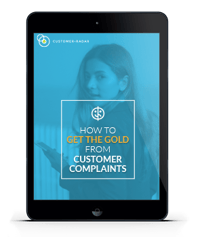No business wants customers to leave, that’s common sense. But, in order to keep as many customers as possible, businesses need to know what customers want and what makes them leave. That empowerment means that they can then do something about it and keep more customers on their books.
In simple terms, customer churn is when a customer ends their relationship with a company. This can mean that they’ve cancelled their subscription to a service, ended a membership, or simply decided to do their grocery shopping elsewhere.
Churn happens for a myriad of different reasons, varying from customer to customer depending on what is important to them. Most companies see an unavoidable natural rate of customer churn, however, a vast majority of that churn can be prevented.
“Reducing churn by 5% can increase profits 25-125%.” - Joshua Paul
Customer churn is calculated by varying methods which can get quite complicated. In most cases businesses calculate churn as:
-
The number of customers who have left in a specific time frame
-
The percentage of customers lost in a specific time frame (customer churn rate)
-
The recurring business value that is lost
-
The percentage of the recurring business value that is lost
The natural (or acceptable) churn rate is hard go gauge, as every business is different. It is also affected by the level of competition companies have and how much customer loyalty they enjoy. For example, US SaaS companies have reported regular churn rates of 6-8%. Sky TV has published annual churn rates around 14-18% in recent years. To establish an acceptable churn figure, businesses need to consider what is acceptable for them. As long as the trend is moving in the positive direction, it is seen as a good indicator for customer sustainability.
Turning customer churn around
“73% of consumers say friendly customer service representatives can make them fall in love with a brand.”
Making a great first impression on customers is the most valuable thing a business can do for its long-term customer retention. Meeting and exceeding customer expectations is fast becoming the norm, particularly in industries such as retail and hospitality and increasingly others as well. Great impressions lead directly to customer loyalty as well as advocacy, while poor ones lead to customer churn. After all, loyal customers are 5x as likely to repurchase, 5x as likely to forgive, 4x as likely to refer, and 7x as likely to try a new offering.
Offering customers easy channels to provide feedback is another important strategy in combating customer drain. A popular statistic says that 91% of unhappy customers simply leave without complaining. Without hearing from customers, businesses simply lose customers without capturing any learnings about what it was that made them leave.
Capturing customer feedback can be as simple as building out a Net Promoter Score customer survey and integrating it with their existing systems. NPS survey platforms easily integrate with CRM systems (eg. Salesforce, simPRO), dispatch and point-of-sale systems (eg. Vend). These surveys not only capture learnings from individual customers but also allow businesses to benchmark their customer satisfaction over time and see the improvements made. The most important part is to make any customer survey fast and easy to complete, and available via whatever device or platform is native to the customers - email, social networks, SMS messages etc. Being omni-channel is hugely important in finding your audience where they are.
As unwanted as customer churn is, those unhappy customers that leave represent the greatest opportunity to learn and improve. They are most often quite willing to tell businesses what they did wrong and what made them leave. Reacting to the negative feedback and genuinely reaching out to the people unhappy with a business is often enough to turn their experience into a positive one. Following up on feedback makes customers feel valued, whereas not responding can make them even harder to recover and losing them to competition.
Feedback data represents direct, relevant input into products and services through a customer perspective. Listening to feedback actively can quickly point to deeper organisational issues businesses may not be aware of.
Customer churn is what businesses never want, but it’s unavoidable to some degree. However, businesses can minimise and grow on customer churn by communicating with customers and building out a customer-centric culture. That starts by listening to customer feedback, taking action and learning from customer experiences.
Want to know more about strategies on dealing with complaints? Download our free eBook here:











